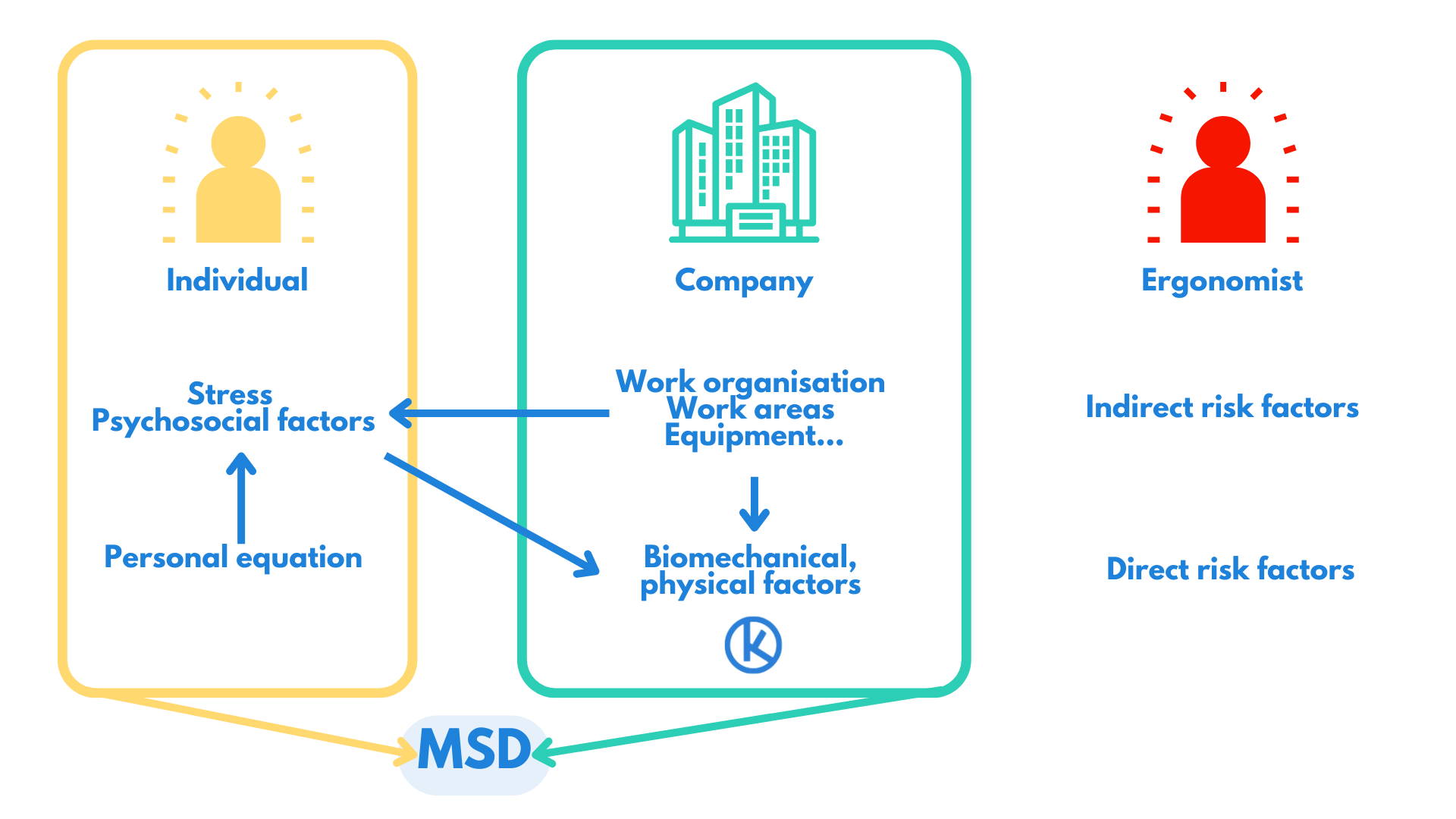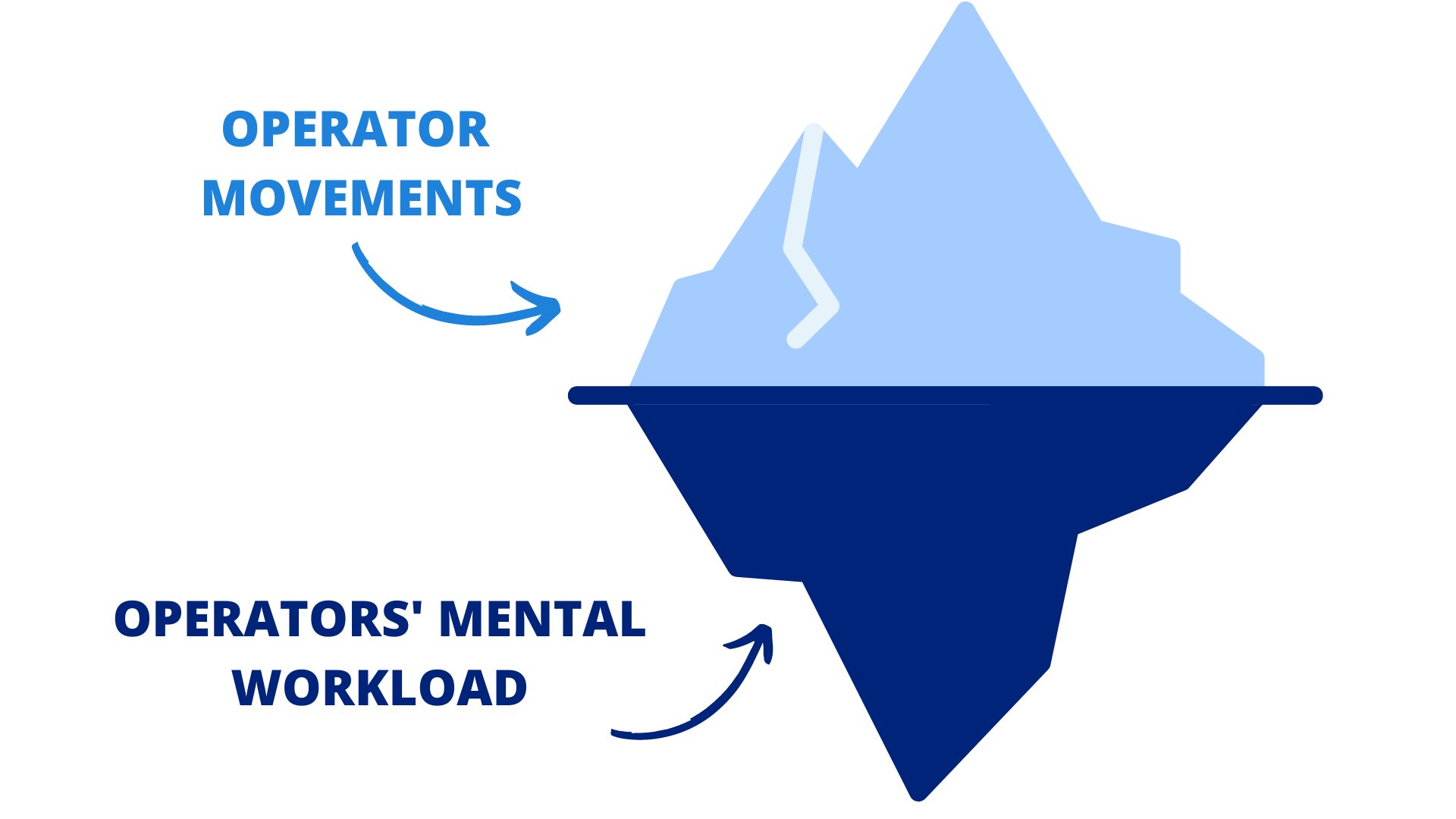Ergonomics: what is it?
At Moovency, we are convinced that helping operators to manage their workloads helps to preserve their health in the long term and is also a performance driver, whatever your sector of activity, your needs or your type of structure.
That’s why we talk a lot about MSD prevention and… ergonomics. But what are we really talking about? What’s the point? To help you, we’ve put together all the information you need to understand ergonomics and the ergonomist’s job. Here’s how.
The science of adapting work to people
Ergonomics is a science. It seeks the best possible match between the physical and mental characteristics of workers and production objectives. In short, it adapts a work environment (its tools, equipment and organisation) to the needs of the user.
There are several forms of ergonomics:
- Physical ergonomics: here we analyse the relationship between the operator’s activity and his anatomy. Ergonomics studies work postures, movements and work rates, and identifies the musculoskeletal disorders that may be associated with them.
- Cognitive ergonomics: this concerns the operator’s “mental load”. Over the course of a working day, many sources of tension act on mental processes. Whether it’s memory, decision-making, the working environment or stress: many factors have a direct impact on the operator.
- Organisational ergonomics: finally, we talk about organisational ergonomics when we are looking to optimise the way work is organised. This involves communication within the company and the study of teamwork.
What does ergonomics do?
Ergonomics is the science of improving the efficiency of people in motion. Ergonomists analyse work situations with a view to transforming them in order to :
- protect people’s health
- improve working conditions
- improve the quality and efficiency of production.
Through their studies and analyses, ergonomists can provide companies with practical solutions to reduce the number of MSDs among their employees, which many companies are trying to reduce because the figures are so high.
As well as being a health problem – MSDs are considered an occupational disease – musculoskeletal disorders are also a hindrance to productivity.
How does ergonomics work?
In order to make the best possible study of the operator’s working environment, the ergonomist carries out a methodical analysis based on a global approach that takes into account all the constituent elements of a work situation. This is a multidisciplinary analysis that draws on the ergonomist’s various areas of expertise:
- biomechanics ;
- psychology ;
- physiology ;
- sociology ;
- technology ;
- etc.
The approach is also participative, since the ergonomist will interview the people concerned and invite them to express their views on their activity. The information gathered will be incorporated into the overall analysis. At this stage, the ergonomist gathers valuable information: the characteristics of the operator, his objectives, the meaning and interest of his work, and so on.
But above all, the ergonomist has to adopt a realistic approach, because he has to take an interest in the activity as it is actually carried out, and therefore identify the differences between this real work and the work prescribed by the company.
The ergonomist must therefore draw up recommendations that are a subtle blend of the organisation of the operator’s work and all the technical elements that come into play on a daily basis.

Company Performance vs. Prevention of Musculoskeletal Disorders (MSDs)
Must we really choose between health and work? Should being productive at work come at the expense of well-being? Are musculoskeletal disorders (MSDs) the price to pay?
Where does Kimea fit into all this?
The Kimea solution helps ergonomists to quantify risks.

Indeed, despite the multi-factorial nature of the problem, the epidemiological literature tends to favour a reduction in exposure to direct factors. In other words, biomechanical factors, which are generally easier to measure.
This type of approach translates into prevention focused on the design of the workstation.
And that’s where Kimea comes in. The data capture tool, combined with cutting-edge algorithms, gives an instant view of the risks of MSDs, so that action can be taken more effectively. Thanks to Kimea, ergonomists :
- can carry out an overall analysis quickly and easily
- have reliable data ;
- and save a considerable amount of time.
However, Kimea does not replace ergonomists – quite the contrary! Movement is only the visible part of work activity.
Movement is the result of a compromise between the task – what needs to be done – the company’s objectives, those of the operator, the material resources available, the operator’s experience and the possibilities for collective work. All this represents the invisible part of the work activity.

The risk of gestural toxicity will increase with the presence of constraints in the work situation, constraints to which the operator cannot provide solutions. The solution would then be to compromise on posture.
By analysing work activity, ergonomists can establish links between joint constraints – highlighted by KIMEA – and overall work organisation.
Thanks to these two areas of expertise, Moovency can easily draw on the realities on the ground and adapt to the constraints of all businesses. In this way, Kimea can be integrated into any type of ergonomic approach!
Convinced by the benefits of ergonomics for your business?
To find out more about our solution and all its features, contact us!
Author : Romane REPESSE, ergonomist at Moovency
